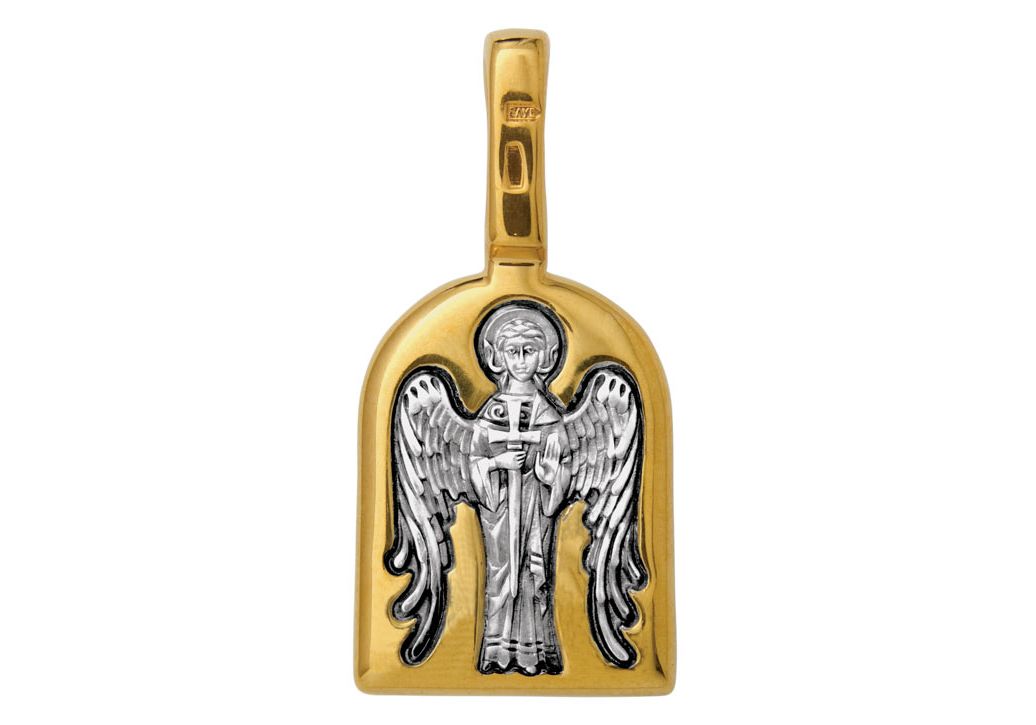Grand Prince St. Vladimir, Equal-to-the-Apostles. Guardian Angel 102.115
91.95 $
Product description: Miniature relief Casting Gilding Niello Handwork
Metal type: Akimov Jewerly
Brand: Akimov Jewerly
Average weight: 5.00 gramm
Sizes: 2,7 * 1,3 * 0,2 mm
Few names in history are comparable by significance to that of Grand Prince St. Vladimir, Equal-to-the-Apostles, Russia Baptizer who for centuries to come determined the spiritual fate of Russian Church and Russian people.
Vladimir was a son of the Great Prince Svyatoslav († 972) and a grandson of St. Olga, Equal-to-the-Apostles. His mother Malusha († 1001) when a child was baptized by Olga. Malusha was a daughter of Malch, the resident of Lyubech, identified by historians with Mahl, the Prince of the Drevlyany land, executed by Olga after her husband Igor had been killed therein.
Vladimir was born about 960. When he was 10, his father died, before death having divided Russian land among his three sons. Yaropolk reigned in Kiev; Oleg governed the Drevlyany land, Vladimir sitting in Novgorod. The early period of his reigning Vladimir lived as a violent heathen. He was a polygamist, loved sumptuous feasts and bloody battles; being 18 he seized his brothers` principalities, and became an absolute ruler of Kiev state.
In August, 987 an event happened that changed the march of all Russian history: Vladimir concluded a treaty of military assistance with the internal war-torn Byzantine Empire. He obliged himself to send six thousand of Varangians in exchange for the hand in his marriage to the Princess (Tsarevna) Anne, the sister of Emperors Basilius and Constantine. He promised to get baptized before wedding. Soon the rebellions were suppressed with assistance of Russian army. But the Greeks rejoiced at sudden and rapid deliverance didn’t care to hurry at complying with the arrangement.
Indignant at such a slyness Vladimir occupied Korsun (the today Chersonese) – the stronghold of Byzantine supremacy on the Black Sea – and sent ambassadors for the Princess threatening hostilities against Greece. Eight days after the bride came. Together with her Vladimir received the Tsar Title and relevant insignia. In Korsun Vladimir get baptized and wedded, and returned the town to the Greeks.
Together with the Princess the Holy Hierarch Michael, the Metropolitan to be of Russian chair came to Kiev, escorted by retinue, the clergy of parish, multiple of relics and other objects of worship. So the morning came, unforgettable for the Russian history – the morning of citizens of Kiev baptizing in Dnieper water in 988.Tthe day before Vladimir ordered to announce in the city: “If anyone does not come to the river tomorrow – whether rich or poor; whether a mendicant or a slave – that one will be my foe”. Therefore all townspeople, young and old gathered and got baptized.
At command of Vladimir all over the Holy Russia, from ancient towns to remote villages pagan shrines started being subverted, and idols being destroyed; and churches were being raised and consecrated on those places. On the very spot of martyrdom of Christian Varangians Theodore and John (commemorized on July 25) whom he sacrificed to pagan god Perun five years before, Vladimir erected the temple in the name of the Holy Mother of God Dormition (the Church of the Dime). The temple became the first-capital temple for the Russian Church. The church was named so because a tithe of treasury incomings was allotted for its upkeep.
St. Vladimir had done a great deal for Russian state consolidation. But after Christianization his aggressive policy turned into constructive and enlightening one. Even his favourite feasts became a means of evangelistic effort. They were held on Sundays and on high holy days after the Liturgies. Lavish holyday entertainment was laid for citizens of Kiev; the bell rang; doxology was choired; mendicant minstrels sang heroic epic and spiritual verses. The feasts were as well held in honor of victories of the epical heroes, captains of Vladimir`s armed force — Dobrynya, son of Nicetas; Alyosha, son of a priest; Rogday the Bold.
St. Vladimir governed Russia for thirty seven years (978-1015), being in holy baptism for twenty eight of them. He is commemorated on the day of his joining to Maker – on July 28 (15).


